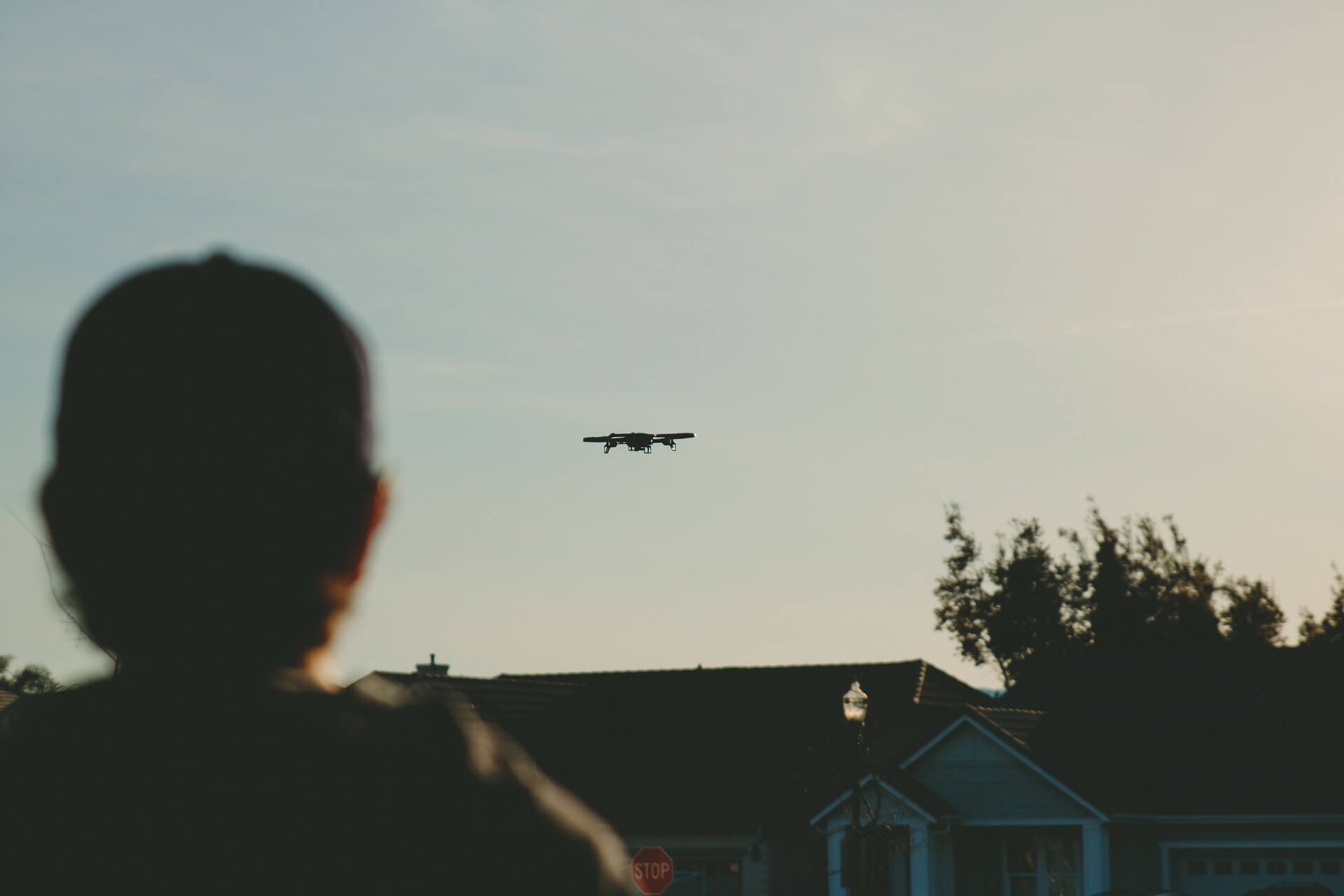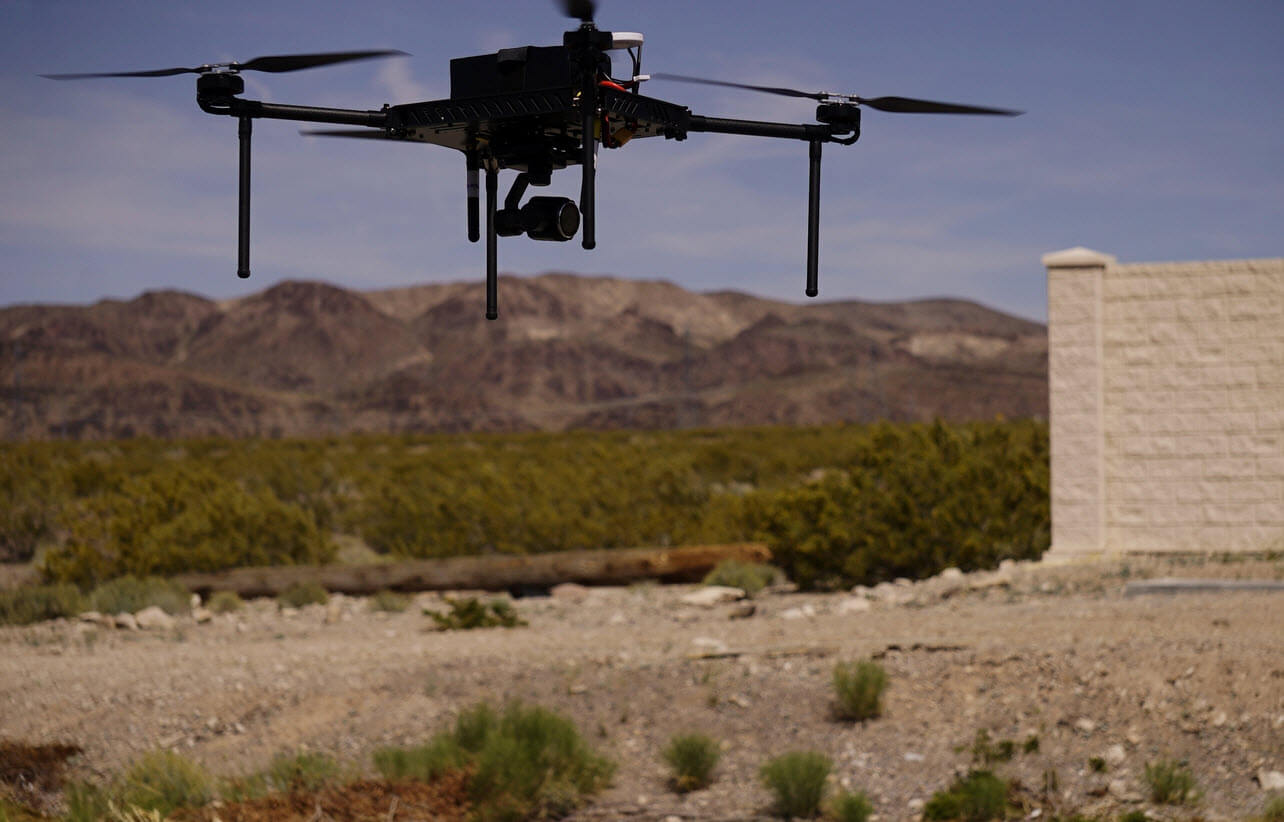By Mike Kahn, Chief Marketing Officer
AEE Aviation Technology, Inc.

Drone inspections of turbine towers and blades can save a wind-farm owner time, cost, and safety risks over rope-based inspections. However, it is important to choose a drone (or UAS inspection service) wisely. High-definition images are key to accurate turbine blade inspections, but first ensure safety measures are followed during flight.
As of the end of 2017, nearly 345,000 wind turbines were operational in the world. What this means is more than 1,035,000 turbine blades are subject to wear, requiring regular inspections and care throughout their lifespan. Advanced drones, or unmanned aerial vehicles (UAVs), are transforming the wind O&M industry.
Drone inspections of turbine towers and blades can save a wind-farm owner time, cost, and safety risks over conventional, rope-based inspections. In fact, Navigant Research predicts the global wind-turbine inspection drone market to grow to $6 billion by 2024. There’s just one catch, and that’s cost.
The commercial choice
The sticker price of a quality commercial drone can put a serious dent in the pocketbook. Wind-farm owners and operators, for example, are spending up to $25,000 on one drone. Although quality automated turbine-blade inspection companies exist, there are project owners that prefer a DIY (do-it-yourself) approach. This is particularly true for owners of multiple wind sites. The idea of buying one drone to service several sites sounds like smart budgeting.
However, saving upfront O&M expenses may prove more costly down the road. Whether buying a UAV or outsourcing drone services for blade inspections, quality is critical for safe, accurate, and reliable results. So choose wisely.
Consumer drones are a fraction of the cost of commercial ones and may entice some wind-farm owners. Unfortunately, consumer UAVs are unsafe to fly at wind farms. These devices lack a reliable ground station (the remote control system) and ability to operate safely or effectively in high winds. Consumer drones also lack the camera quality for high-resolution imaging and a software platform for data collection and analysis.

With a 40-minute flight time, AEE’s Mach 4 UAV stays on target up to 10 minutes longer than other commercial drones, and is equipped to handle winds up to 18 miles per hour and can reach speeds of up to 40 mph. The Mach 4’s conformal coating IPX 55 rating also protects it against most weather conditions.
Drone operators must use extreme caution, and particularly near transmission lines and power plants (that includes wind farms). The Federal Aviation Administration or FAA’s (Part 107) commercial drone certification program is required and, unfortunately, has resulted in a number of amateur drone pilots providing wind inspection services. The concern is there are no additional regulatory qualifications required for wind sites above the FAA’s basic test.
Great skill and experience are necessary to pilot a drone near wind turbines. High winds, dust, and electromagnetic interference make smooth drone piloting a challenge. An unexpected gust of wind could lead to a damaged blade or tower from a drone crashing into it (or even worse, crashing into people on site). A nick of a blade from a drone hovering too closely could also result in repair costs greater than the inspection.
A must-have checklist
Increasingly, commercial drones are becoming autonomous, using algorithms to find the quickest and safest routes during blade inspections. Such capabilities will cost, however, and particularly when paired with other high-end drone features. These features may include extended UAV flight times to maximize the inspection time at a wind site (which is typically at a remote location), megapixel cameras with optical-zoom capacity for detailed imaging of possible blade damage, and a high-definition video display.
So how should a wind owner cost-effectively choose a UAV or drone service, without compromising onsite safety or reliability of the inspection?
Here’s a checklist.
Safety. Flying in windy conditions and near turbine towers and blades present serious risks and visual obstructions. Drone pilots must adhere to numerous safety regulations associated with flight operation near structures. Know the rules and limitations of your drone.
A steady hover. Stability is a basic and necessary requirement of a drone conducting blade inspections. A UAV must find the set target, align its camera lens, and stabilize in flight for as long as necessary to return crisp and clear data and imagery. This requires strong flight capabilities and a steady hover, even in high winds and harsh conditions.
Weatherproofing. High winds are a given at most wind sites, which means dust or debris is likely. Water from rain or snow is also a concern at some sites. Consider a drone with a camera lens coating that protects it against foreign elements.

A steady hand is critical when piloting a drone near wind turbines. Mach 4’s control Y-12 ground station (hand controller) is equipped with 1.4 gigahertz for flight control, offering a stable control experience.
A stable, high-res camera. A quality blade inspection must provide as detailed a report as possible, including a slight nick in a blade or beginning stages of leading-edge erosion. A high-resolution camera with zoom imaging is non-negotiable for accurate and detailed data capture of turbine blades. For example, the Mach 4 commercial drone has advanced 4K optics with a 10:1 payload, which means the images it captures can be magnified by 10. Its 1080p live video downlink also lets maintenance teams view targets and footage in real time.
In addition, it is important to ensure a drone’s camera is stable and multi-directional. The flight direction and aim point of a camera may differ during inspections, and particularly in high winds. A camera with an encased control system and a 360° panoramic view should ensure image capture, regardless of a drone’s direction.
Video capability. Drones with high-definition video sensors can capture additional footage, or provide a live-stream feed during inspections. Video is also ideal for aerial surveys when mapping or siting wind projects. Other features, such as a transmission system from bird to downlink, can provide rocksteady video when needed at the critical point of documenting the inspection.
Flight time. Most commercial drones last for 20 to 30 minutes before requiring a charge. Very few can last longer, however, flight times vary so it is important to do your research.
Experience. A full-featured, commercial drone is excellent for most turbine blade inspections. Without a highly experienced pilot or user, however, it can cause more harm and damage than good. Put safety first.
Filed Under: Drones, News, O&M





Kris,
You’ll need a drone with a thermal camera resolution of 640×512 and ideally a 19mm lens. That focal length narrows your field of view, but allows you to be at a farther distance yet pick up more detail. Getting SUAS Level I training as a Thermographer from a company such as ITC is also a really good idea so that you’ll be able to interpret what you’re seeing and make the appropriate adjustments for reflectivity(emissivity)….
Tony
Owner, Crosswind Analytics, LLC
http://www.crosswindanalytics.com
How do I get into inspection for windmills? I have the part 107 and drones with the thermal imaging capabilities. I also have a 20mp camera that is 4K. Thanks for any information you can offer.
Thanks,
Kris Kessinger